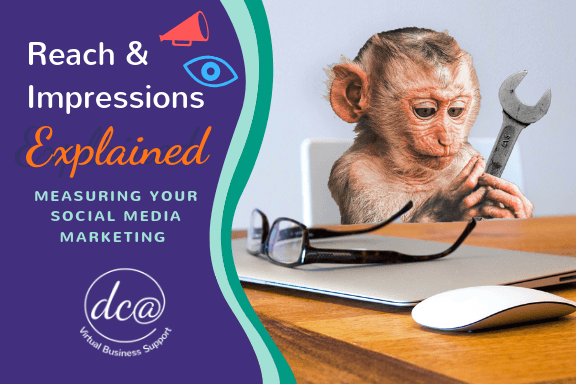
Measuring Your Social Media Marketing: Reach and Impressions Explained
Reach and impression are two marketing terms that are tossed around frequently, but often leave DIY marketers confused. To measure the success of your marketing efforts, you’ll need to understand their meaning. We’ll explain differences between the two so you can thoughtfully analyze your data and tweak your marketing efforts based on your results. Before you know it, you’ll be a social media analysis ninja!
Reach vs Impression
Reach is described as the number of people that saw your content, only counting each person once, even if they saw your content multiple times. Impression is the number of times your content was displayed, whether it was clicked or not. A single person can count for multiple impressions if they saw your content multiple times, perhaps once from you, the originator of the content, and a second time from their friend who shared your post. On the other hand, reach will only show how many people saw your post, no matter if they viewed it multiple times.
And here comes the monkey wrench… each platform has some variation in the meaning of reach and impressions and how they measure it. We’ll attempt to make you a mechanic so you can handle that monkey wrench and make the best decisions for every platform you post on.
Facebook Reach and Impression Metrics
Facebook defines reach and impression as we described it above, however, they do offer further analytics for each. Here’s the low down on analytics for each.
Facebook Reach:
1. Organic – The number of people who saw your content in their news feed without you paying for an ad.
2. Paid – The number of people who saw your ad after investing some dinero.
3. Viral – This is the equivalent of monkeys using said wrenches to really soup up your ride! Or, the number of people who saw your content or page through another person’s actions. Their friend may have liked, shared or commented on your content, making it appear in their newsfeed.
Facebook Impression:
1. Organic – The number of times your content was displayed on someone’s newsfeed, or on their page, for free.
2. Paid – This one is the same as above, however you had to open your wallet to get this measurement.
3. Viral – The number of times your content was displayed through another person’s actions. Their friend may have liked, shared, or commented on your content, making it appear in their newsfeed. I think the monkeys were at it again.
Twitter Reach and Impressions Metrics
Twitter offers analytics for impressions only. It’s defined as any time a user sees a tweet of yours, whether it was in their feed or within a conversation. However, be careful when you create your Twitter marketing plan. Twitter users will see your content more if you tweet vs if you comment on someone else’s tweet. Leveraging your time wisely may be through spending more time publishing content than commenting on others.
Instagram, Snapchat, Google AdWords & Google Analytics
- Instagram mirrors Facebook, probably because they own Instagram!
- Snapchat has very similar metrics but call theirs reach and story views.
- Pinterest offers impressions, shown as the number of times a Pin appears in the home feed, category feed and search results. They also show your reach, which is an average number of people who saw your Pins for the month.
- Google AdWords uses cookie-based reach which tracks cookies and unique reach. They estimate how many users actually saw your content by removing multiple views from one individual. But one question remains, do monkeys eat cookies?
- Google Analytics offers a look into users; how many monkeys visited your page. As well as page view:, the number of pages viewed by the monkeys.
Now that you have a better understanding of the difference between reach and impression, monkey wrenches, and cookies, which metric on which platform should you focus on? The answer depends on your goal. If you’re looking to attract more customers and increase your audience, you should look closely at your reach. If you’re looking to obtain repeat business or wow your current audience and customers, you should focus on making more impressions.
Analyzing your metrics isn’t a one-and-done task, you’ll want to consistently look at your social media marketing strategy, make goals and measure your success. When you have a handle on reach and impressions, you’ll want to take into account website traffic, lead generation, newsletter sign-ups, conversions and most importantly your revenue. All these are further insights as to whether your social media strategy is working.
If you need assistance with your social media marketing or analyzing your success, we can help. The first step is to have a conference call to discuss your marketing needs and we’ll develop a plan of action to make progress toward obtaining your goals.
